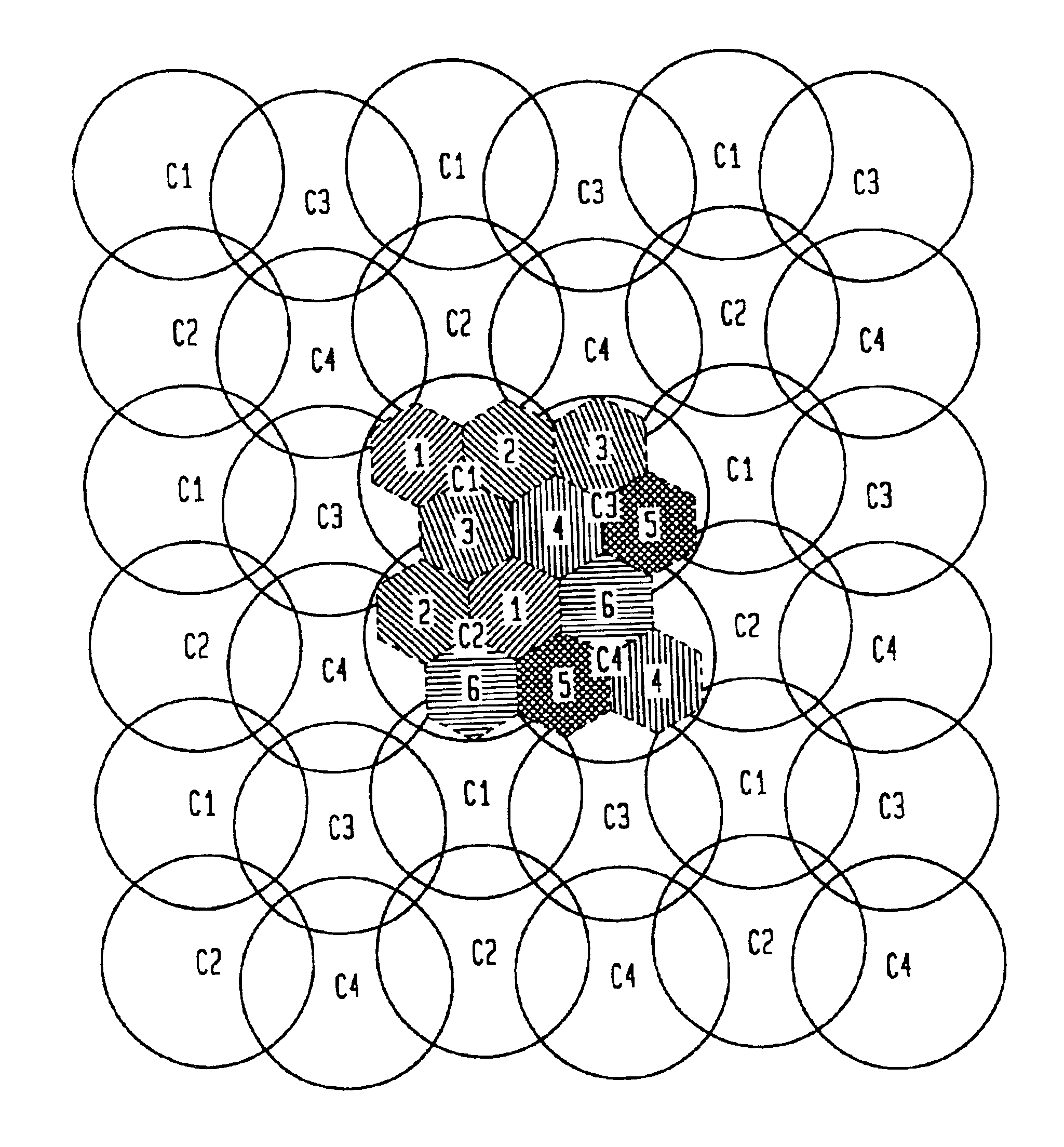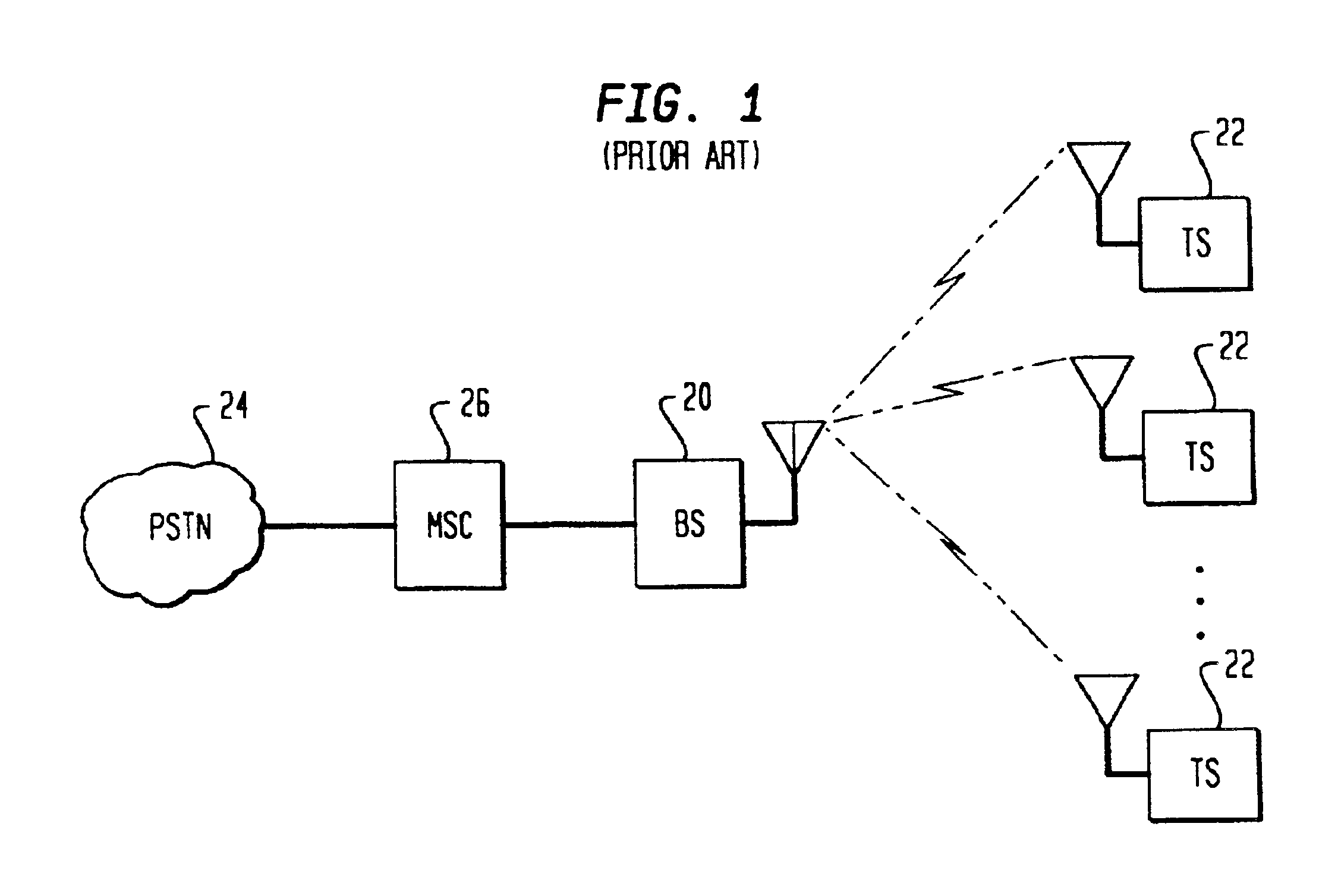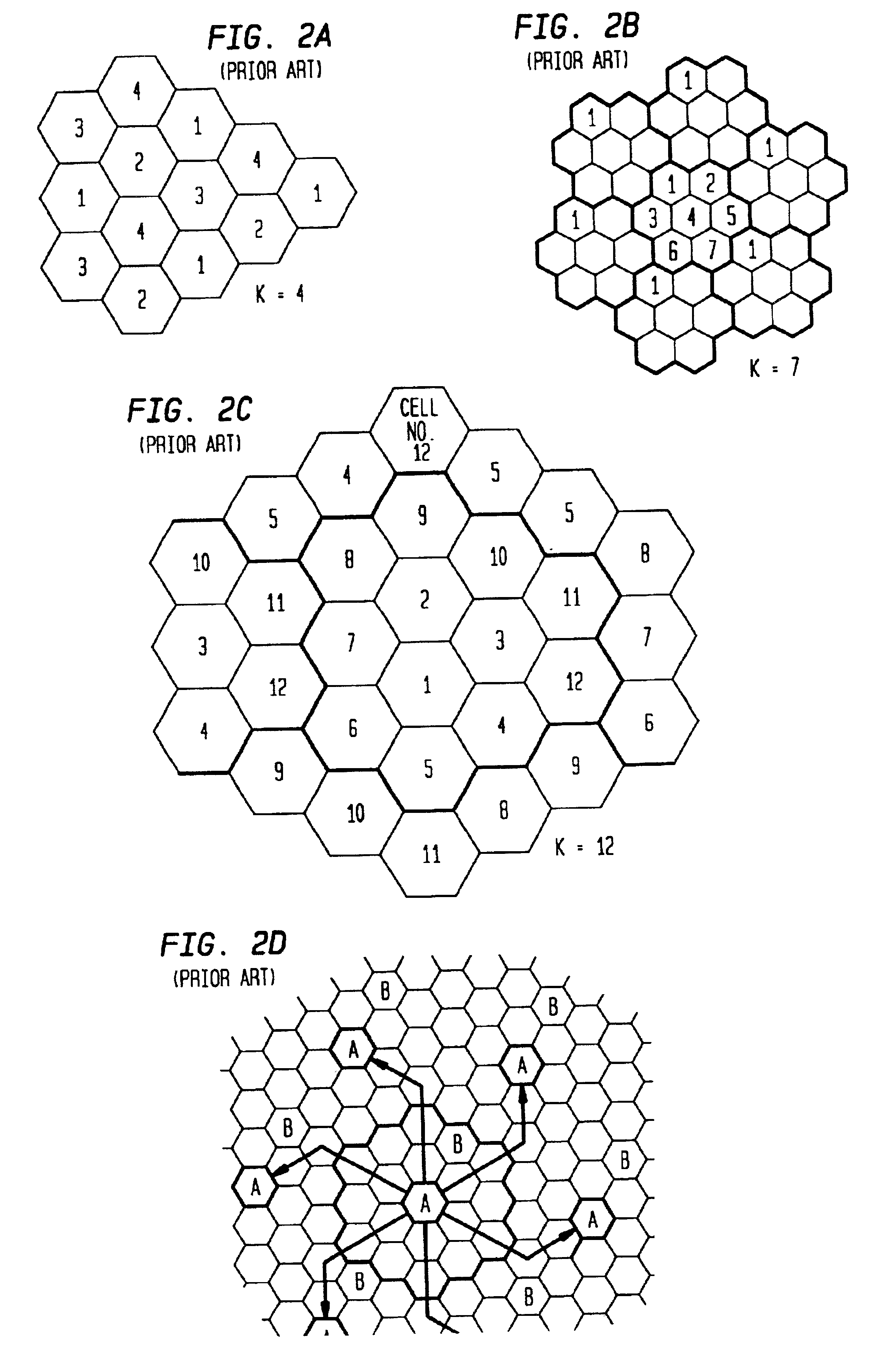Wireless communications cellular architecture for improving communications resource allocation
a wireless communication and cellular architecture technology, applied in the field of wireless systems, can solve the problems of limiting the overall capacity of the system, limiting the bandwidth of the system, and each cellular system having access to a very limited number of frequencies, so as to maintain acceptable quality of service requirements and reduce the frequency reuse factor
- Summary
- Abstract
- Description
- Claims
- Application Information
AI Technical Summary
Benefits of technology
Problems solved by technology
Method used
Image
Examples
Embodiment Construction
[0030]The present invention comprises a cellular architecture and communications resource allocation method and apparatus that significantly reduces a frequency reuse factor for a wireless communications system. The capacity of a conventional cellular system is inversely proportional to the frequency reuse factor (i.e., K) for the system. A frequency reuse factor for conventional systems is typically K=7. The present invention reduces the frequency reuse factor to K=2, thereby tripling the capacity of many existing cellular systems, while maintaining acceptable quality of service (QoS) requirements.
[0031]A frequency reuse factor of K=2 is achieved using the following concepts. An advantageous embodiment of the invention uses a narrow beam trisector cell (NBTC) versus that of a wide beam trisector cell (WBTC) used in conventional systems. A NBTC uses an antenna for each sector having roughly half the beamwidth used in a WBTC. The base station antennas with smaller beamwidths used in ...
PUM
 Login to View More
Login to View More Abstract
Description
Claims
Application Information
 Login to View More
Login to View More - R&D
- Intellectual Property
- Life Sciences
- Materials
- Tech Scout
- Unparalleled Data Quality
- Higher Quality Content
- 60% Fewer Hallucinations
Browse by: Latest US Patents, China's latest patents, Technical Efficacy Thesaurus, Application Domain, Technology Topic, Popular Technical Reports.
© 2025 PatSnap. All rights reserved.Legal|Privacy policy|Modern Slavery Act Transparency Statement|Sitemap|About US| Contact US: help@patsnap.com



